Pipe Major George Howieson
LCol (ret) Tom Compton, CD, BA
Director, Argyll Regimental Museum & Archives
George Howieson was born on 25 December 1889 in Biggar, Scotland. He had no siblings and his mother was listed as single in his service documents. He served for three years in the British Army, King’s Own Scottish Borderers before emigrating to Canada in 1913. George found work as a salesman in Hamilton, Ontario. He enlisted on 6 March 1916 with the 173rd Battalion, Canadian Expeditionary Force. Once in England, the 173rd was broken up for reinforcements and George was transferred to the 228th Northern Fusiliers, originally recruited from North Bay, Ontario. George is listed as the Pipe Major for the 228th, but the unit was soon redesignated as the 6th Battalion, Canadian Railway Troops. Railway troops, as the name suggests, built and maintained the vast network of railways needed to sustain the Canadian Corps and other British Army formations on the Western Front. General HQ troops, classified as base or line of communication troops, did not normally qualify for battle honours. However, the four former infantry Battalions that served as Railway Battalions were at the front lines and received numerous casualties. Due to the nature of their work, they were often completely exposed to enemy artillery, mortar, and machine-gun fire without being able to seek shelter. The 228th/6th CRT received nine battle honours, including Somme 1918; St Quentin 1918; France and Flanders 1917–1918; Bapaume 1918; Hindenberg Line 1918; Ephy 1918; Beaurevoir 1918; St Quentin Canal 1918; and Cambrai 1918.
At some point in 1917 George Howieson was identified for his actions and was listed in the London Gazette as being Mentioned in Dispatches. The citation signed by Winston Churchill, then Secretary of State for War, identifies Howieson’s “gallant and distinguished services in the field.” We do not know the specific circumstances under which he was noted for his service and gallantry, but it is reasonable to assume it was under fire. Perhaps as Pipe Major he was inspiring the troops under fire with his pipes? We may never know. The bronze leaf on the medal ribbon indicates Howieson was awarded the MiD.
Howieson returned to Canada and was demobilized 13 April 1919. He subsequently married Sarah Thomas, who had been working as a domestic servant in Hamilton. There is no record of them ever having children. Unfortunately, there is very little known about George and Sarah after that. They appear on voters lists as late as 1968, but after that the trail goes cold. We are unsure of when, where or how he died. NE OBLIVISCARIS.
DISCOVERY AND RESTORATION
The restoration of the Howieson collection began with a casual glance at one of the framed artefacts in the Pipes and Drum room by Pipe Sgt Cooper, who advised Drill Sergeant Major Seddon and Pipe Major Balinson. A closer inspection revealed that one medal ribbon had a MiD attached to it and that the citation had the signature of Winston Churchill. The Argyll Regimental Foundation and the Museum asked Ms. Sherry Phillips to assist with the restoration. Ms. Phillips, a professional conservator, applied her skills to the dismantling of the original display and subsequent cleaning of the medals. DSM Seddon replaced the extremely faded ribbons with the appropriate ribbons from that period and reattached the MiD device on the correct ribbon. It had previously been innocently pinned to the wrong ribbon. The photo of Pipe Major Howieson was left attached to the original backing as there was a concern the photo could be damaged if separated. Materials used in the restoration are designed to minimize corrosion and deterioration from acidic products.
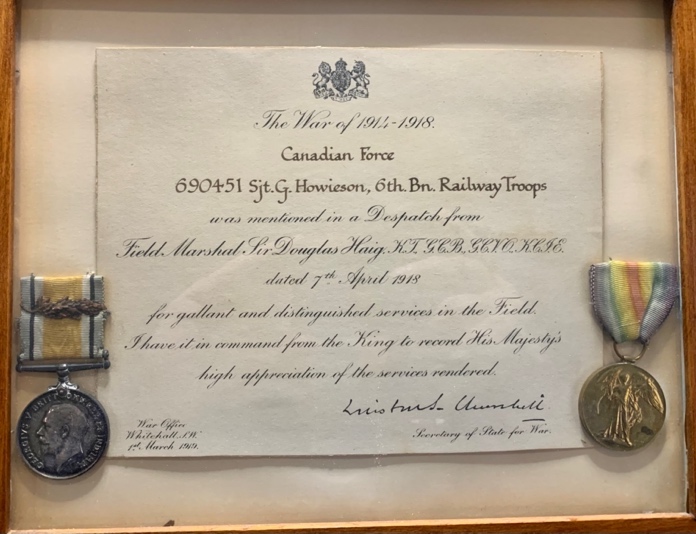
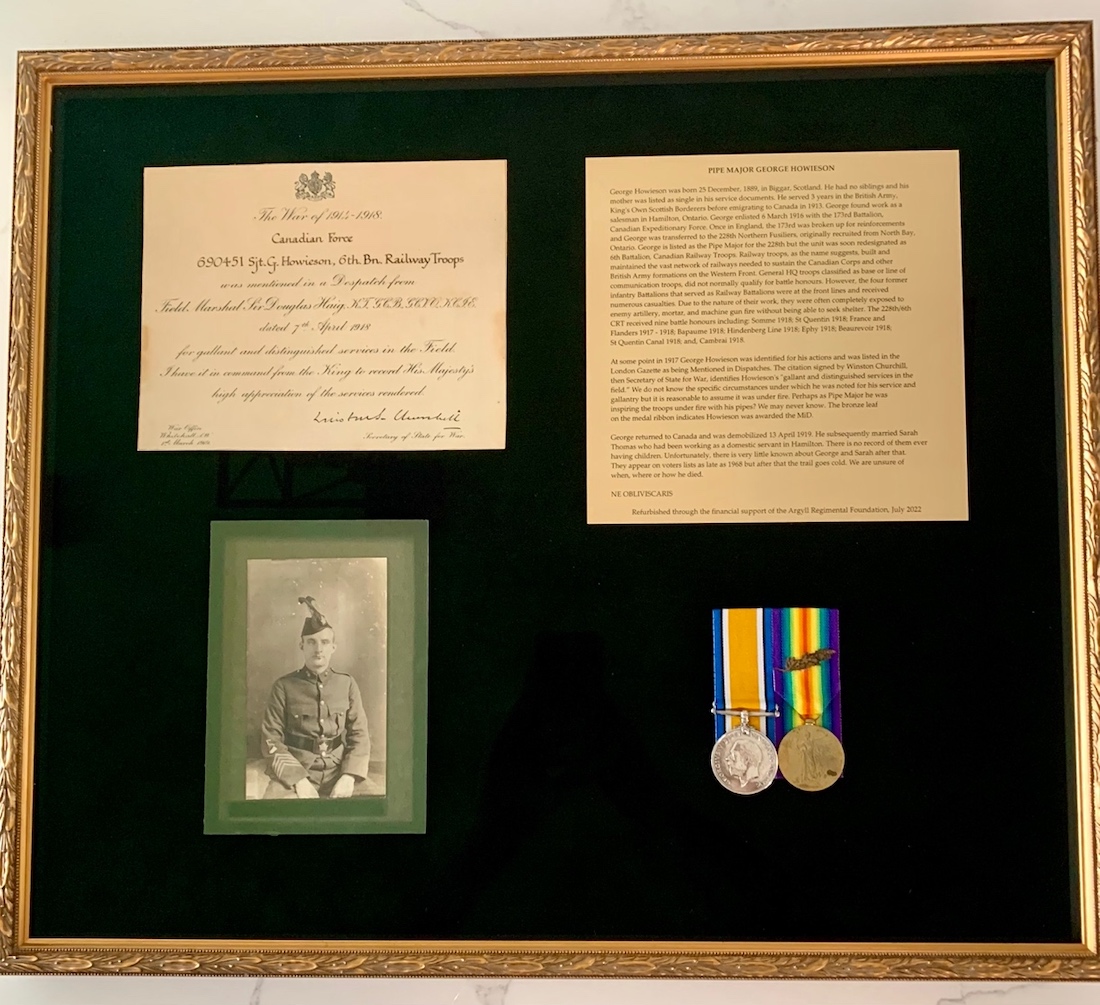 Figure 5. The final restoration in its new frame. Note the MiD device has been mounted on the correct ribbon.
Figure 5. The final restoration in its new frame. Note the MiD device has been mounted on the correct ribbon.
A special thanks to Mr. David G Morgan for the information regarding the Canadian Railway Troops.
This project was generously financed through the assistance of the Argyll Regimental Foundation.

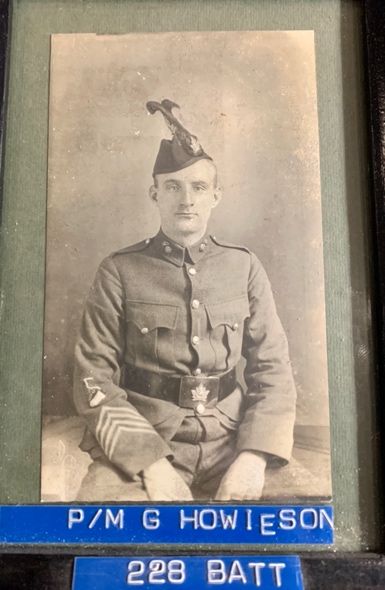 Figure 2. PM Howieson photo in its original frame.
Figure 2. PM Howieson photo in its original frame.
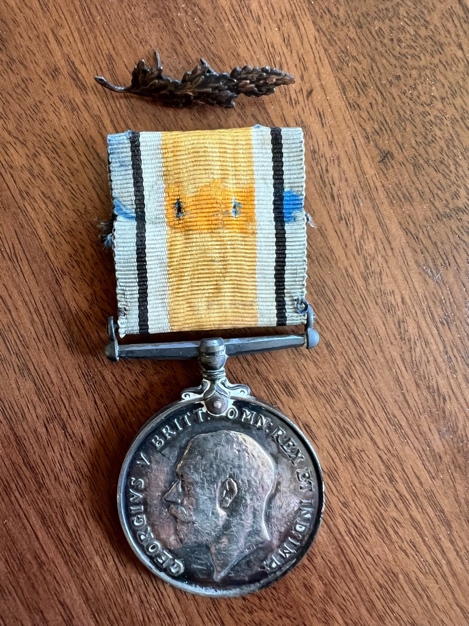 Figure 3. The British War Medal with Howieson’s MiD device above, prior to restoration.
Figure 3. The British War Medal with Howieson’s MiD device above, prior to restoration.
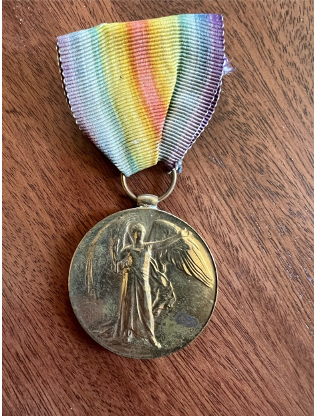 Figure 4. The Victory Medal prior to restoration.
Figure 4. The Victory Medal prior to restoration.